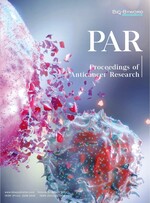Abstract
Objective: To explore an effective treatment for spontaneous progressive hemopneumothorax in young people. Methods: Thirty-four young patients with spontaneous progressive hemopneumothorax from January 2018 to December 2019 were selected to be included in the control group for retrospective analysis; from January 2020 to December 2021, 69 young patients with spontaneous progressive hemopneumothorax were selected to be included in the study group. The control group was treated with double-port thoracoscopic bullectomy, whereas the study group was treated with single-port thoracoscopic bullectomy. The intraoperative blood loss, operation time, tube retention time, VAS score, postoperative air leakage, and 1-year recurrence of the patients in the two groups were observed and analyzed. Results: The perioperative conditions of the patients in the study group, including intraoperative bleeding loss, operation time, tube retention time, and VAS scores, were 15.12 ± 1.36, 54.69 ± 18.78, 2.14 ± 0.98, and 3.25 ± 0.14, respectively. The perioperative conditions of the patients in the control group, including intraoperative bleeding loss, operation time, tube retention time, and VAS scores, were 22.69 ± 2.01, 55.36 ± 19.01, 4.21 ± 1.01, and 5.36 ± 0.45, respectively; other than the operation time, the differences in intraoperative blood loss, tube retention time, and VAS scores between the two groups were statistically significant (p < 0.05); after the surgery, two patients in the study group had postoperative air leakage, accounting for 2.90% and another two patients had recurrence one year after the surgery, accounting for 2.90%; on the other hand, three patients in the control group had postoperative air leakage, accounting for 8.82%, and two patients had recurrence one year after the surgery, accounting for 5.88%. However, ?2 test showed that p > 0.05. Conclusion: Treatment of spontaneous progressive hemopneumothorax in young people is better with single-port thoracoscopic bullectomy than with two-port thoracoscopic bullectomy, which effectively reduces intraoperative bleeding. The pain level is significantly better with single-port thoracoscopic bullectomy than with two-port thoracoscopic bullectomy, and the prognosis of patients is good with a low probability of recurrence for both, single- and two-port thoracoscopic bullectomy.
References
Yamaguchi G, Konaka C, 2022, Effectiveness of Rehabilitation for Postoperative Pain After Surgery for Spontaneous Pneumothorax in Young Adults. Annals of Palliative Medicine, 11(4): 1191–1196. https://doi.org/10.21037/apm-21-1756
Ashkenazi M, Bak A, Sarouk I, Bar Aluma BE, et al., 2021, Spontaneous Pneumothorax – When Do We Need to Intervene?. The Clinical Respiratory Journal, 15(9): 967–972.
Iyoda A, Azuma Y, Sakai T, et al., 2021, A Novel Finding Related to Bulla and Bleb Formation in Patients with Primary Spontaneous Pneumothorax. BMC Pulmonary Medicine, 21(1): 1–7.
Wang X, Wei H, Zhang H, et al., 2021, Treatment and Clinical Effect of Primary Spontaneous Pneumothorax in Young Patients. Chinese Journal of Thoracic and Cardiovascular Surgery, 28(08): 979–983.
Qu B, 2020, Analysis of Recurrence and Influencing Factors after Spontaneous Pneumothoracoscopic Surgery. Renowned Doctor, 2020(10): 21–22.
Hong L, 2020, Comparison Analysis of the Effect of Single-port and Double-port Thoracoscopic Bullaectomy for Spontaneous Pneumothorax. Contemporary Medicine, 26(11): 105–107.
Liang L, Fu Y, 2019, Comparison of Curative Effects of Different Thoracoscopic Pleurodesis in the Treatment of Spontaneous Pneumothorax in Young People. Systems Medicine, 4(11): 90–92.
Bisconti M, Marulli G, Pacifici R, et al., 2019, Cannabinoids Identification in Lung Tissues of Young Cannabis Smokers Operated for Primary Spontaneous Pneumothorax and Correlation with Pathologic Findings. Respiration, 98(6): 503–511.
Li H, 2019, Analysis of Risk Factors for Reoperation after Closed Thoracic Drainage in Young Patients with Pneumothorax, dissertation, Tianjin Medical University.
Al-Githmi I, 2018, Uniportal Video-Assisted Thoracoscopic Surgery and Outcomes for Recurrent Primary Spontaneous Pneumothorax: Single-Institution Experience. Surgical Science, 9(3): 122–127.
Liu X, 2017, Perioperative Nursing Experience of Thoracoscopic Bullae Resection in Young Patients with Spontaneous Pneumothorax. Henan Journal of Surgery, 23(05): 161–162.
Meng Q, 2017, Comparison of Single-Port And Three-Port Thoracoscopic Surgery for Spontaneous Pneumothorax in Young Patients. Henan Medical Research, 26(11): 1965–1967.
Tsuboshima K, Nagata M, Wakahara T, et al., 2016, Propensity-Score-Matched Comparison of Postoperative Pain Between Young and Elderly Patients Who Underwent Video-Assisted Thoracoscopic Surgery for Spontaneous Pneumothorax. The Japanese Journal of Thoracic Surgery, 69(9): 739–743.
Chi F, Yang H, 2016, Treatment of Spontaneous Pneumothorax in Young Patients by Thoracoscopic Pleural Fixation. Chinese Journal of Clinical Lung Science, 21(04): 666–669.
Jin L, Huang Y, Chen Y, et al., 2014, Selection of Treatment Method of Spontaneous Pneumothorax in Young Patients with First Attack. Chinese Journal of Thoracic and Cardiovascular Surgery, 30(07): 385–387 + 393.
Panagopoulos N, Papavasileiou G, Koletsis E, et al., 2014, VATS Bullectomy and Apical Pleurectomy for Spontaneous Pneumothorax in a Young Patient with Swyer-James-MacLeod Syndrome: Case Report Presentation and Literature Review Focusing on Surgically Treated Cases. Journal of Cardiothoracic Surgery, 9(1): 1–7.
Liu Y, Liu S, 2015, Clinical Analysis of 100 Cases of Adolescent Spontaneous Pneumothorax. China Rural Health, 2015(13): 53.
Liu Z, Guo X, 2014, Etiological Analysis of Spontaneous Pneumothorax. Everyone Health (Academic Edition), 8(08): 89.
Chen B, 2009, Young Students are the High-Risk Group of Spontaneous Pneumothorax. Chinese Contemporary Medicine, 16(17): 180–181.
